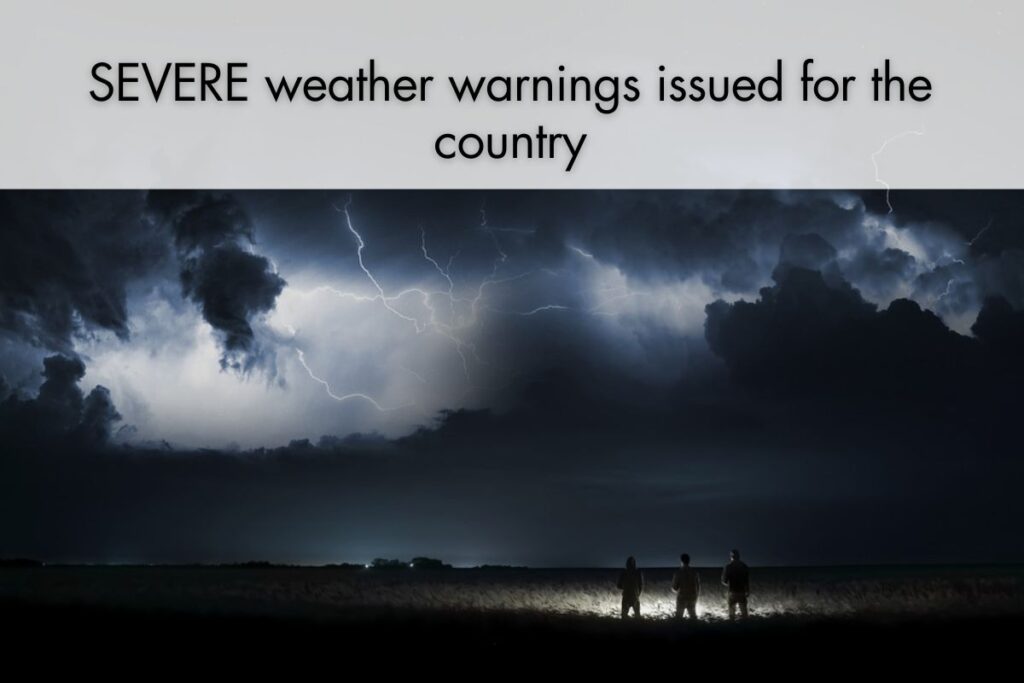The SA Weather Service (SAWS) has issued several severe weather warnings across various regions of the country today, 10 April.
See more weather on the live blog here: Weather live updates
Several weather warnings issued
The SAWS has issued a yellow level 2 warning for severe thunderstorms for the following regions:
- Gauteng
- Eastern parts of the North West
- Eastern parts of the Free State
- Extreme south-western and south-eastern parts of Limpopo
- Western and eastern parts of Mpumalanga
ALSO READ: Weather warning for SEVERE thunderstorms in Limpopo
These thunderstorms may result in heavy downpours leading to localised flooding of susceptible formal/informal settlements or roads, low-lying areas, and bridges.
Additionally, hail and strong winds may cause localised damages to vehicles and property, such as homes and car ports.
Along the coast between Plettenberg Bay and East London, a yellow level 2 weather warning has been issued for damaging winds that may result in localised damage to infrastructure and settlements.
There may also be some disruptions to harbours/ports and difficulty in navigation.
ALSO READ: KwaZulu-Natal Weather: Thundershowers in all areas TODAY
Another yellow level 2 warning has been issued for damaging waves due to very rough seas along the coast from Plettenberg Bay to Wavecrest.
This may result in difficulty in navigation, localised disruption to small harbours/ports, and localised disruption to beachfront activities.
The public is advised to take necessary precautions to minimize the impact of these weather conditions on their daily activities.
ALSO READ: Gauteng Weather: HEAVY downpours expected TODAY
HOW TO STAY SAFE DURING HEAVY RAIN
During extreme rainy weather, it is important to take every precaution to stay safe; here are a few tips.
- During storms, people living in low-lying areas must take special care as sudden floods might affect them.
- They should monitor the rising water levels and evacuate to a safer place or higher spot when the water level rises.
- Use other routes and do not cross through flooded roads or bridges.
- Avoid crossing low-lying bridges, streams, and rivers.
- Never try to walk, swim, or drive in swift-flowing water as it can sweep you off your feet.
- Motorists must be very careful and avoid driving through flooded areas.
- Drive to and park at safer areas.
- Monitor weather alerts on radio and television.
- Contact municipal disaster management centers, the nearest police station, or call the national emergency numbers (112, 10177, or 107) when faced with threats.
- Do not try to drive over a low-water bridge if water is flowing strongly across it and the ground is not visible.
- Teach children about the dangers of floods.
ALSO READ: Orlando Pirates coach sends special message to club’s fans
- Keep important documents in a water-resistant container.
- Keep cell phones in close proximity and have emergency numbers at hand.
- Be especially vigilant at night as it is harder to recognize potentially deadly road hazards.
- Do not camp or park cars along rivers or washes, especially during heavy rains or thunderstorms.
- If on foot, be aware that low moving water can also be dangerous during flood conditions.
- Do not walk into moving water.
“Communities are encouraged to try to avoid contact with any flood waters as it may be contaminated with raw sewage, oil, or other dangerous substances and may also be charged with electricity from fallen power lines.” the statement by the Department of Cooperative Governance and Traditional Affairs concluded.
CLICK HERE TO READ MORE ARTICLES BY MICHELLE SWART

